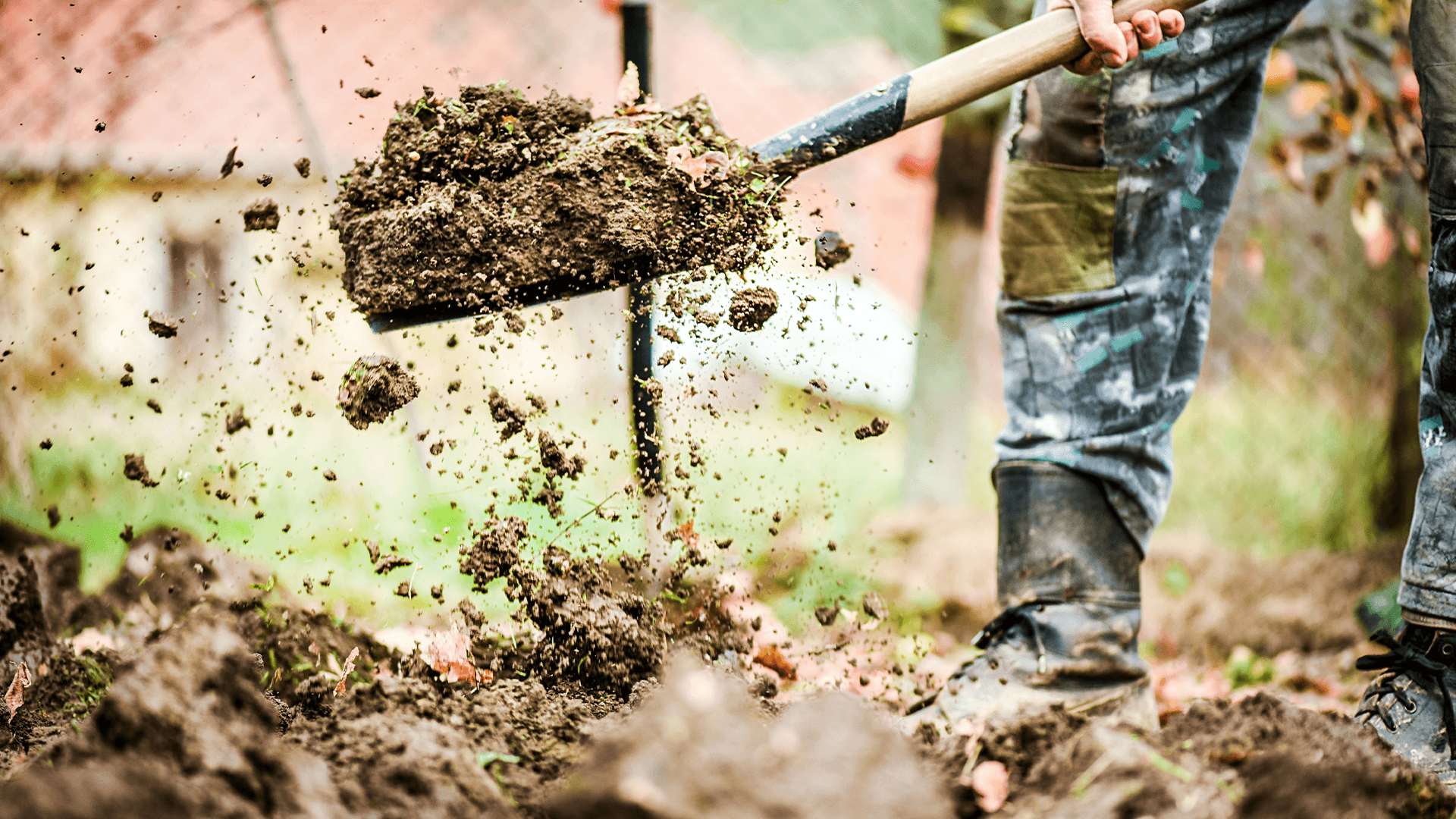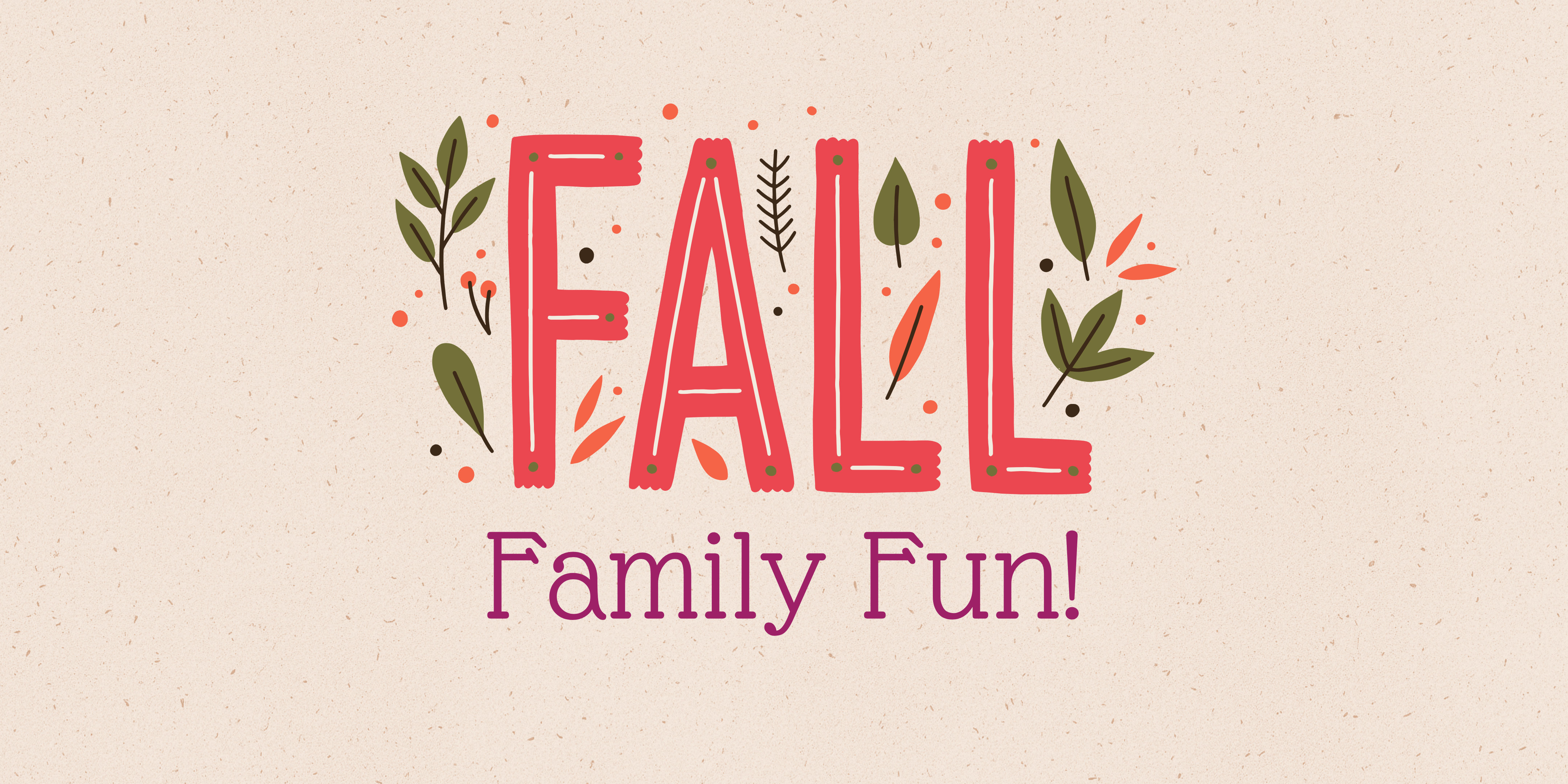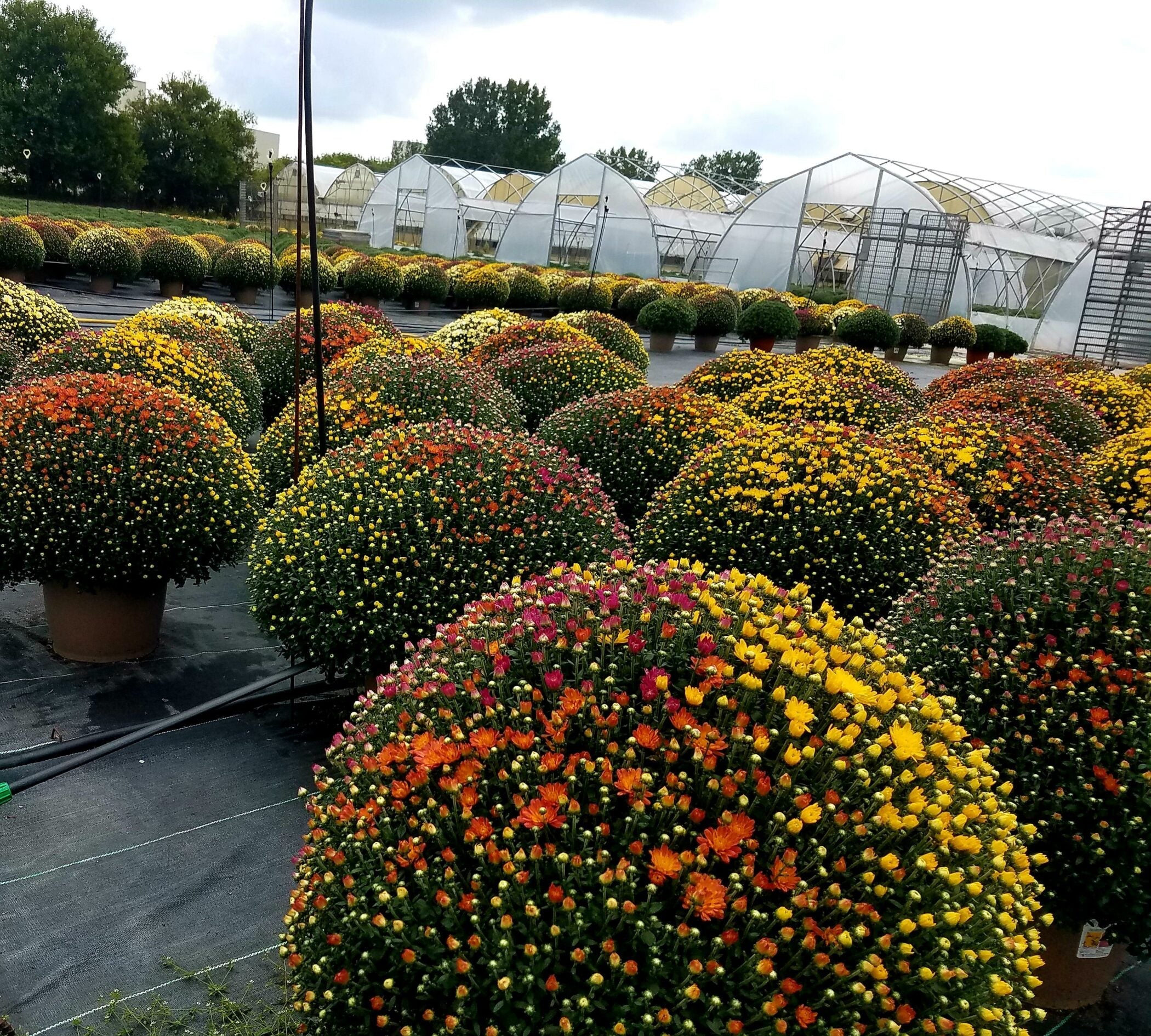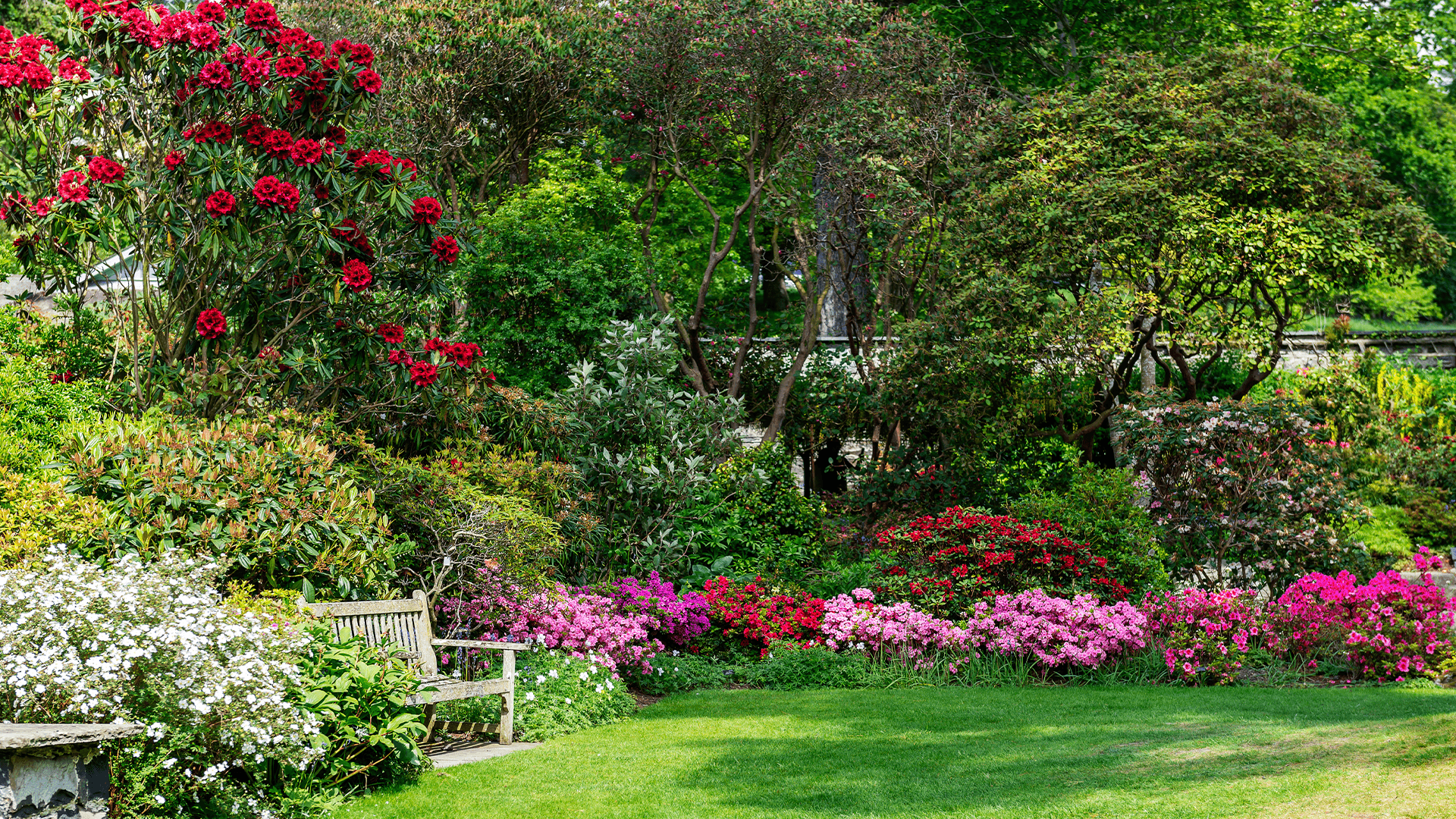
Soil is the secret sauce of gardening. While it may just look like brown dirt, it is the lifeblood for healthy plants. Unfortunately, many of us work with poor native soil that leaves our trees, shrubs, and perennials wanting more. The landscape near our Blooms Greenhouse in Laporte, Indiana, tends to be on opposite sides of the spectrum: clay or sand. Both of these soil types have their share of benefits and drawbacks when it comes to gardening. Here’s how you can prepare heavy clay and sandy soils for planting, ensuring your plants get everything they need to not only survive—but thrive!

Types of Soil
Every yard is unique. While our local landscape mainly consists of clay and sand, let’s take a look at all of the most common types—there’s a good chance you have some unique combination of all of these in your very own backyard.
- Clay: The most common soil type in our region, clay is compact and likes to hold onto too much water. It is slow to drain and causes some plants to become waterlogged and eventually suffocate.
- Sandy: These soils can be a gardener’s nemesis as they contain very few nutrients, tend to drain quickly, and can be slightly acidic. Homes near the lake tend to have sandier soils.
- Silt: Can be an excellent soil as it retains water well and has higher amounts of nutrients. It also drains well.
- Peat: Is not typically found in the everyday landscape. It’s often found in bogs and is a highly fertile, slightly acidic substrate that holds water well while allowing excess to drain away.
- Chalky: Defined by alkalinity. Plants that thrive in this soil need to be able to tolerate a PH of 7.1 and higher.
- Loam: Ahhh, the ideal combination of sand, silt, and clay!
How to Prepare Your Soil for Successful Planting
For this article, we will solely focus on how to prepare clay and sandy soils for planting because those are the two predominant types in our area. The key to changing any soil type is through amendments. Amendments are additions we add to our native soil to improve quality, drainage, and plant health. Let’s start with that sticky, stubborn clay and learn how to prepare it for planting.

How to Amend Clay Soil and Prepare it for Planting
It’s not all bad. While clay has poor drainage, it does contain quite a few nutrients that plants need to thrive, such as calcium, potassium, and magnesium. You most likely have clay soil if you notice pooling water in areas of your landscape when it rains—and conversely, cracking dry ground at times of drought. Clay also sticks heavily to garden tools such as shovels and spades.
While many trees and perennial shrubs have roots robust enough to work through clay, it proves more difficult to successfully grow bulbs, vegetables, and smaller perennials with finer root systems in this heavy substance. The good news is that it’s not that hard to fix! Here are a few steadfast amendments to add to your clay soil and how to prepare it for planting.
- Compost is your new best friend. While it can benefit every soil type, compost is especially beneficial for clay. It is composed of nutrient-rich organic matter and improves drainage.
- Aluminum Sulfate or Sulfur adds acidity to the soil and is another worthwhile amendment as clay tends to be alkaline.
- Gypsum, Perlite, and Vermiculite improves drainage; again, something clay could use more of.
All of these are worthy amendments to mix in with your native clay soil. There is one thing to be aware of, though. If you simply dig your planting hole and amend it with a mixture of these amendments, you aren’t fixing the problem. Sure your plants will be happy for a while, but the moment the roots try to stretch their feet into the surrounding clay, it will be like hitting a brick wall.
Ideally, you should measure out the entirety of your gardening space and amend it all at once; this may mean you need to pull up some existing plants and transplant them after the amendments are complete. The quantity of amendments is dependent on how much you need to change your soil structure. In general, laying 8 inches of compost and then thoroughly mixing it into the top foot of the landscape will help a great deal.

How to Amend Sandy Soil and Prepare it for Planting
We all love a sandy beach, but not a sandy garden. While sand does improve drainage and is an essential element, too much of it will not offer an ideal habitat for your garden plants. Learn how to prepare your sandy soil for planting with the following amendments:
- Compost is still your best friend. While it can benefit every soil type, compost is beneficial for sand as it adds nutrient-rich organic matter and improves moisture retention—something sandy soil needs desperately.
- Peat Moss is high in nutrients, offers great drainage and moisture retention.
As we mentioned above, these amendments are best added and mixed into the entire garden landscape, ensuring an overall change to the soil structure and not just planting pockets.
Altering your landscape is doable with a bit of elbow grease. Once your amendments are in place, go ahead and happily plant your garden, knowing that they are going into a healthy environment in which they will thrive.
Still not sure how to prepare your clay or sandy soils for planting? Come see us! Our experts can guide you through.






Share:
Grow Your Groceries in Style with Our Edible Container Gardening Tips
Refresh Your Fall Garden